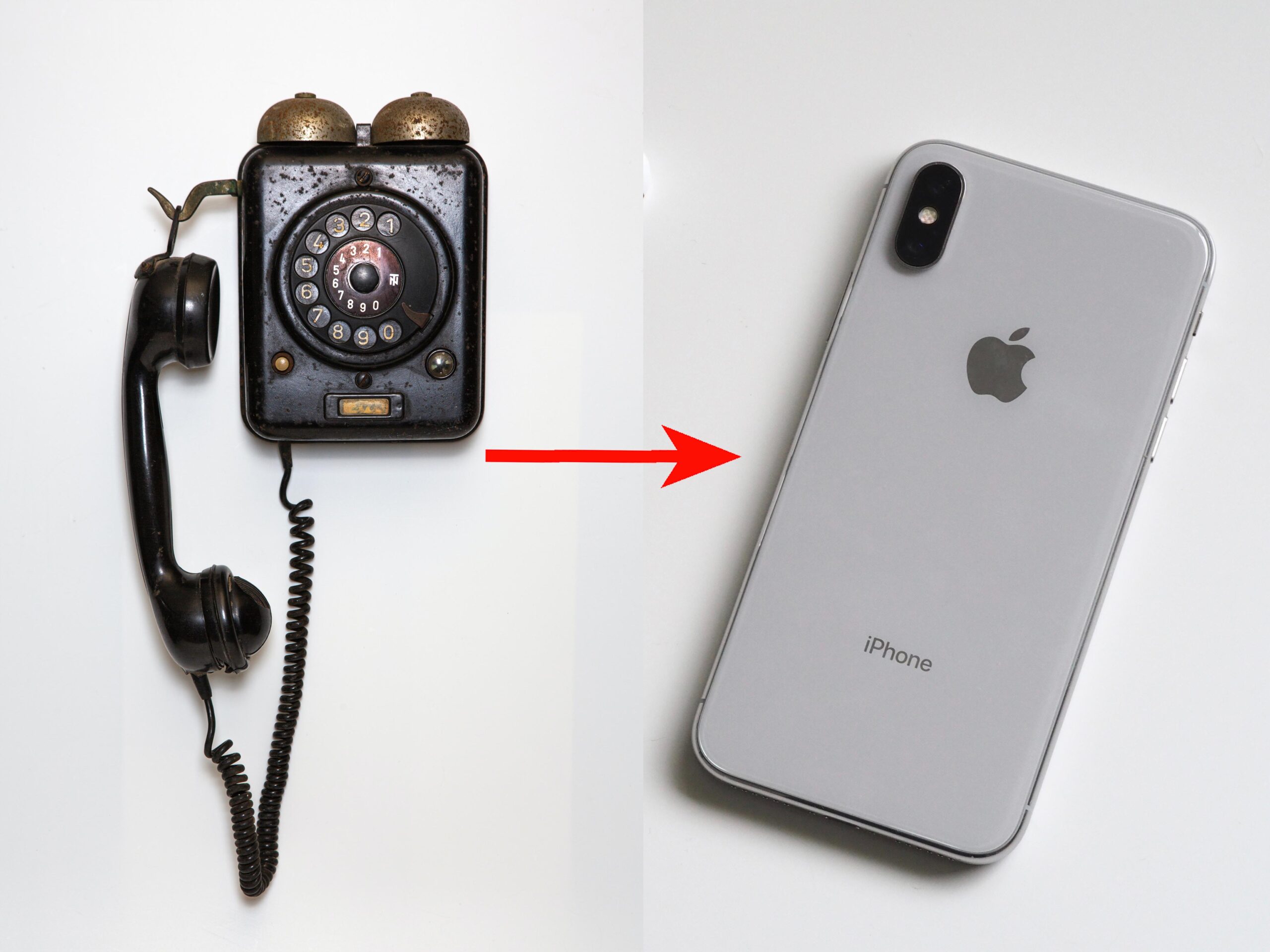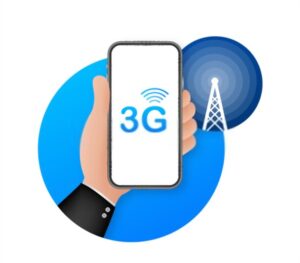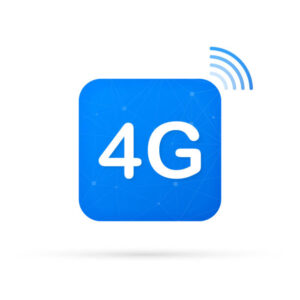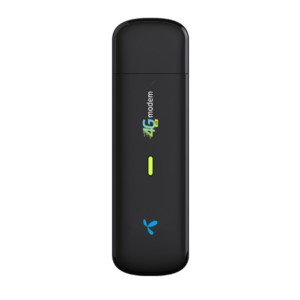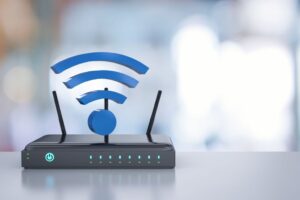The development of mobile telephone networks has progressed through a series of generations, each of which has brought significant improvements and advancements in technology. The different generations of mobile telephone networks are:
- First-generation (1G) networks: The first generation of mobile telephone networks, also known as 1G networks, were introduced in the 1980s. These networks used analog technology to transmit voice and data, and they had a number of limitations, including low capacity, poor sound quality, and limited coverage.
- Second generation (2G) networks: The second generation of mobile telephone networks, also known as 2G networks, were introduced in the 1990s. These networks used digital technology to transmit voice and data, which improved the quality of the signal and increased the capacity of the network. 2G networks also introduced the concept of text messaging, which revolutionized the way that people communicated with each other.
- Third-generation (3G) networks: The third generation of mobile telephone networks, also known as 3G networks, were introduced in the 2000s. These networks used advanced digital technology to transmit voice, data, and multimedia content, such as video and music. 3G networks had a much higher capacity than 2G networks and were able to support high-speed internet access and data services.
- Fourth generation (4G) networks: The fourth generation of mobile telephone networks, also known as 4G networks, were introduced in the 2010s. These networks use even more advanced digital technology to transmit voice, data, and multimedia content, and they have a much higher capacity and speed than 3G networks. 4G networks also support advanced features such as high-definition video streaming and video conferencing.
- Fifth generation (5G) networks: The fifth generation of mobile telephone networks, also known as 5G networks, are the latest generation of mobile networks and are currently being deployed in various countries around the world. These networks use cutting-edge technology to transmit voice, data, and multimedia content, and they have an even higher capacity and speed than 4G networks. 5G networks also support advanced features such as low latency and high reliability, which are critical for applications such as remote surgery and self-driving cars.
Overall, the different generations of mobile telephone networks have brought significant improvements and advancements in technology, enabling people to communicate and access information more easily and effectively. As the development of mobile networks continues, it is likely that even more advanced and sophisticated technologies will be introduced, further improving the capabilities of these networks.
Different Generations of Mobile Telephone
The development of the mobile telephone has been divided into different parts. Each part is called Generation.
The very beginning of the mobile telephone was called Zero Generation (OG), which had the most basic services like MTS and IMTS. Then came the first generation (1G), which had analog cellular networks. Then came the second generation (2G), which was the digital cellular network.
Then there is the third generation (3G), which includes broadband data services. And the fourth generation (4G) is coming in the future so that IP (IP Internet Protocol) network will be used.
1. Zero Generation (OG)
The name of this generation of phones was Mobile Radio Telephone. In 1948, AT&T launched its first commercial mobile radio telephone service. By 1947, AT&T had brought 100 cities in the United States and their connected highways into the mobile telephone network.
Then the mobile radiotelephone system was upgraded to the modern cellular system. Because the telephone system is the forerunner of cellular phones, it is often referred to as the pre-cellular system.
Among the technologies used in pre-cellular systems were Push to Talk PTT, Mobile Telephone System MTS, Improved Mobile Telephone System IMTS, and Advanced Mobile Telephone System. Advanced Mobile Telephone System-AMTS).
Anyone calling these telephone systems would need the help of an operator. The user had to hold down a button on the handset while talking and release that button while listening to the other end. The whole device weighed about 38 kg.
This heavy device could be placed in a car or large truck. Later, however, mobile devices the size of hand-held briefcases were marketed. The “father” (transmitter + receiver) was usually placed, and the “head” (handset, dial, and display) was placed next to the driver’s seat.
2. First generation (1G)
The first generation mobile technology was entirely analog. Japan’s NTT (NTT Nippon Telegraph and Telephone) first launched the first generation automatic cellular network in 1989. Initially, its network was limited to Tokyo, but within the next five years, its service spread throughout Japan.
Key features of the first generation
- The first generation used analog technology.
- Circuit-switched networks were used for voice calls.
- This system could only talk.
- There was no SMS facility.
- There was no facility to use the internet.
- There was no call forwarding option.
First-generation benefits
- Wireless phone facility
- The phone could be used freely
The difficulty of the first generation
- The quality of voice calls was quite poor
- The battery charge was short
- The size of the phone was much larger
- There was a possibility that there was no security in the network
- Repeatedly cutting the line (call drop)
- The capacity of the network was very limited
3. Second generation (2G)
Digital technology is used for the first time in second-generation mobile telephone systems. More advanced and sophisticated second-generation phones have been introduced to support more users or to make calls at higher rates in densely populated areas of the city and to prevent frequent line cuts.
Second-generation mobile phone systems are beginning to offer more benefits than the first generation in some cases. For example, services like Caller Identity (showing the name and phone number of the caller) and Text SMS (SMS Short Message System) was first introduced on second-generation mobiles. However, the structure of first-generation and second-generation cellular networks was similar.
The second generation has a branch known as 2.5G (2.5G). The reason for saying “2.5” is that it includes a circuit-switched network for voice calls as well as a packet-switched network for internet and data access.
Each generation of mobile telephones offers higher data rates and new features than its predecessors. 2.5 Prajanya is no exception. But the benefits provided by the 2.5 generation are not equal to the third generation, so it has been placed between the second and third generation. Generation 2.5 is the link between the second generation and the third generation.
In 2.5 generations new features like GPRS and Edge are introduced. However, “2.5 Generation” is not an approved generation, but it is called “Industrial Standard”. So the 2.5 generation is actually a part of the second generation.
Key features of the second generation
- Text SMS (SMS Short Message Service) using the phone as well as talking on the phone, MMS (MMS Multimedia Message Service), fax, e-mail, etc. can be exchanged.
- It is possible to use the internet with a mobile phone.
- Camera phones appeared in the second generation.
- Data rates are much higher than the first generation.
The second-generation mobile system introduces several popular standards. These include GSM (Global System for Mobile Communication), CDMA (CDMA Code Division Multiple Access),
GPRS (General Packet Radio Service), EDGE (EDGE Enhanced Datarate for GSM Evolution), etc. are notable.
GSM
A European company called the European Telecommunication Standards Institute (ETSI) developed the GSM standard for second-generation digital cellular mobile phones. Soon after its creation, it became one of the most popular standards in the world.
About 80% of the world’s mobile phones use GSM. Later GPRS and EDGE were added to make it even better.
CDMA
The U.S. military developed the CDMA system. In this way, it is possible to exchange data between multiple transmitters and receivers with a single link. For this, a special digital coding method and spread spectrum method are used in CDMA.
There are several versions of CDMA, such as CDMA One (Redmayne), CDMA 2000, and WCDMA. Of these, the WCDMA standard is used on GSM networks.
GPRS
The European Telecommunication Standards Institute (ETSI) formulates GPRS to add Internet access to GSM networks. It uses a packet-switched network to facilitate internet access.
This is why GPRS is often regarded as the standard between the second and third generations. The data rate of GPRS varies from about 56 kb / s to 114 kb / s.
EDGE
The International Telecommunication Union (ITU) has formulated the Edge Standard to speed up data transfer rates on second-generation mobile phones on GSM networks. Edge is often regarded as the pre-third generation standard. Edge’s data rates range from a minimum of 120 kilobits / second to a maximum of 364 kilobits/second.
Second generation benefits
- Second-generation phones require less battery power, resulting in longer charge.
- The use of digital voice encoding technology results in much better sound quality.
- It is a completely digital system that makes it easy to exchange SMS or email.
- The algorithm used for network security is much better than the first generation.
The difficulty of the second generation
- 1. The signal is very weak as low base stations are used in sparsely populated areas. Due to this, GSM phones cannot be used in rural areas.
- 2. The speed of the internet in second-generation mobile phones is quite slow.
4. 3G
The third generation is the mobile telephone system used in modern times. Data rates are much higher in third-generation telecommunications, up to about 50 megabits/second. The third-generation system is designed for data exchange.
Much more applications can be used on third-generation mobile phones than previous generations. Apart from talking, watching TV with these phones, enjoying multimedia, video conferencing, browsing the internet, sending emails, sending SMS and MMS, locating anywhere in the world with GPS, and much more.
Like the first generation, Japan was the first to introduce third-generation phone services. UMTS and LTE are among the few standards of third-generation Figure 2.26: Third-generation telephone (LTE) is famous.
The latest version of UMTS, HSPA +, is providing third-generation services using several mobile phone operators in Bangladesh.
The maximum data rate in HSPA + standard is 16 Mbps, and the maximum data rate in LTE is up to 300 Mbps.
Key features of the third generation
- Supports Global Roaming.
- Larger emails can be exchanged.
- Any website can be easily browsed.
- GPS can be found anywhere.
- Video calls and video conferencing are possible.
- It is possible to watch high-resolution TV.
- Possible to play online multiplayer games.
Third generation benefits
- Higher third-generation data rates ensure faster data exchange.
- Third-generation networks can work with second-generation phones (LTE exceptions).
- Provides area-based services (e.g., reporting the weather in the user’s area).
- Meetings or conferences can be easily held from one country to another with video calling and video conferencing facilities.
- There are many applications to suit the needs of the user.
- Doing things like watching TV or finding a place with GPS can be done very easily.
Disadvantages of the third generation
- 1. Building third-generation networks is quite expensive.
- 2. It is quite expensive for the user to use the third generation service.
5. 4G
The application of fourth-generation mobile communication has not started yet, it is still in the research stage. The main goal of the fourth generation is to use the packet-switched network throughout the system.
The purpose is to provide faster communication services by exchanging data packets as data for everything from voice calls or emails. Therefore, there are plans to add ultra-broadband internet in the fourth generation.
As a result, it is possible to browse the high-speed web with fourth-generation phones, use IP telephony, play online games, do video conferencing, watch three-dimensional television, do cloud computing, etc.
The fourth generation will have a high speed and high band network with which it will be possible to do anything with the phone seamlessly. Work is underway to develop a standard called LTE Advanced (LTE Advanced or Long Term Evolution Advanced), which will meet all the requirements of the fourth generation.
Fourth-generation benefits
- Data will be transferred at a higher speed. According to ITU, the minimum data rate will be 1 gigabit/second.
- Users will be able to perform seamless tasks like video conferencing without any interruption.
- The range of the fourth generation network is much larger, about 48 kilometers.
- It will also be better in terms of security. As a result, businesses and corporate offices will be able to work with their data without interruption, and the fear of data theft will be greatly reduced.
- This network will allow a user to choose different services of his choice.
The difficulty of the fourth generation
- The equipment needed to build this network will be quite expensive.
- It will be quite expensive for the user to use this network.
Computer Networking
A computer network (or data network) is a type of telecommunication network where multiple computers exchange data between themselves. Computers on a network can be connected to each other through its medium or wirelessly.
An example of a well-known computer network is the Internet, where millions of computers are connected to each other.
Concept of Network
A computer network is a combination of hardware and software that can transfer data from one place to another. A computer on a network may be connected to multiple other computers (or devices).
Figure 2.26 shows the concept of a computer network through the image. Hardware is the components that carry signals from one end of the network to the other.
And the software is a set of instructions with which to perform the necessary work from the network. For example, when an email is sent from one end of the earth to the other, a lot of software works in different stages of the whole process.
Again, various servers, switches, computers, etc. are needed to help the software. This means that both hardware and software are required to create and read emails.
Objectives of Network
The main purpose of the network is to share resources. A computer can share resources in three ways
- Hardware Resource Sharing: Multiple computers can work by sharing a piece of hardware over a network. For example, an organization has 50 computers. On every computer, There are applications for printing documents. As a result, every computer needs a printer. In this case, without buying 50 printers for 50 computers, you can buy only one printer and share it among 50 computers through the network.
- To work with multiple computers sharing software through a software resource sharing network Can, For example, if you buy 1 piece of software for 50 computers of an organization without buying 50 software, 50 computers can share and use it through the network.
- Data Resource Sharing: Multiple computers can share different information among themselves through a network. For example, if you send an email to one computer, it is possible to read it on another computer connected to the network. Or any YouTube video can be viewed on multiple computers connected to the Internet. Similarly, Wikipedia information can be viewed on any computer connected to the Internet. Networking has made the exchange of information around the world much easier. Life has improved a lot as a result of online shopping, online bill payment, online banking, online education system, etc. It is becoming possible to shop online from home without going to the store through online shopping. Without standing in a huge line, bills for various services are being paid through the internet, and vehicle tickets are being bought. It is becoming possible to take the advice of foreign experts or doctors through the internet at home without going abroad. Larger organizations have facilitated internal maintenance by building networks within their various branches. In other words, in all cases, resources are shared through the network.
Types of Network
- Types of networks according to ownership
1. Private Network: Normally no device on a network other than the one connected to a private or private network can communicate directly. These networks are usually owned by an organization or organization.
2. Any device on another network can communicate directly with any device connected to the network on a public network. The best example of a public network is the Internet. Anything on the internetThe site can be viewed from any computer.
b. Types of networks according to control structure
- Centralized Network: In this type of network, all the devices are connected to a central server. The communication between the devices is done through this server. This server stores all types of communication information. Connected to Central Server The devices are called “terminals”. Through the terminal, a user can connect to the server and exchange information with other devices. Most public instant messaging platforms or chat services (eg GoogleTalk, Yahoo Messenger, Facebook message
- Distributed network: The devices in this network are scattered across different networks. This network consists of multiple small networks. Smaller networks can be controlled individually or collectively.
- Hybrid Network: A network consisting of a centralized network and a distributed network is a hybrid network. It has the feature of the centralized network between distributed networks and now this network is being used more in different organizations.
c. Types of networks according to the size of the area
1. Personal Area Network (PAN) The network that is created with the necessary devices in the vicinity of a user is called Personal Area Network or PAN. This type of network usually has devices such as laptops, desktops, mobile phones, tablets, televisions, etc. Both wired or wireless connections (e.g., Bluetooth) can be used to exchange information between these devices. Usually, the network extends to a very small range up to the user’s home or office. A full Bluetooth-based pan is called a piconet.
2. Local Area Network (LAN) A network larger than a pan that uses TCP / IP is called a local area network or LAN. This network is usually seen in schools, colleges, universities, hospitals, shopping malls, offices, courts, etc. Since the size of the LAN is not very large, only one regulator or administrator can control the whole network.
3. The Metropolitan Area Network (MAN) The network system that develops across an entire city is called the Metropolitan Area Network or MAN. Currently, this network is not used very much. This network is usually created between different branch offices of an organization across the city.
4. Wide Area Network (WAN) Wide Area Network (WAN) is a huge network that connects servers located in different countries and continents. Numerous networks around the world together form a huge one-on-one network. These networks have information in them
Uses optical fiber as a medium for communication. An example of the most popular network is the Internet, which allows users from all over the world to exchange data with each other.
5. Types of networks according to service
- Peer-to-peer (Peer-to-Peer) Network: Each computer in the network holds its own resources and files. If the resource is on the computer then only those other computers can get the resource of those files. For example, a printer “A” is attached to a computer, and another computer “B” wants to use that printer, but “A” must be on. To use “B” Christ if “A” is off
- Client-Server Network: This network consists of a computer server, which serves data to everyone on-demand, and other computers are clients, whose data is served. Devices other than computers may be on the network. This network contains all resource servers, and other client computers may use them. For this, there is no need to have another computer on like a peer-to-peer network
- , only if the server is on. However, if the server is off, there is a problem.
Network Devices
A network is not complete if there are only computers and servers in a network. Creating a complete network requires a number of more helpful devices. Modem, hub, router (or router), gateway, switch and NIC are important among these devices. These devices are discussed in this section.
MODEM
Modem stands for Modulator-DEModulator, meaning that the device can perform modulation and demodulation at the same time. When a signal is sent from a computer to another destination via its medium or wireless, some changes are made to facilitate sending or transmitting it.
This change is called the modulation process. When the signal reaches the receiver after modulation, the change is eliminated by demodulating it to receive the original signal. Computer signals are all digital.
Now modulating this digital signal makes it analog. When the analog signal is transmitted to the receiver, it is digitalized again when it is dimmed. Thus a device that can do both modulation and demodulation is called a modem.
- External modem
- Internal modem
- External modem: This modem is located separately outside the computer case. One end of it is connected to the computer and the other end is connected to the telephone line. All data flow is through telephone lines. At present external modem is not used at all.
- Another name for the internal modem is a modem card. It is a circuit board, which can be connected to the computer’s motherboard (the computer’s main circuit board). At present internal modem is being used more in all devices. Internal modems are also being used in modern computers, mobile phones, and televisions.
2. Hub
A hub is a common junction on a network. Hub’s job is to connect different parts of a LAN. A hub has different ports. These ports connect to the network. When a data packet arrives at a port, it is copied to other ports, so that all parts of the network can see the data packets. The hub has no control over these packets arriving at the port, only broadcasts to other ports.
A network can have multiple hubs. However, the number of hubs in the network is determined depending on the number of clients. There are three types of hubs available in the market.
- Passive Hub: This type of hub acts only as a simple connection, through which data is exchanged across different parts of the network.
- Intelligent hubs This type of hub can do some extra work, for example, it can monitor the data flowing in the network and configure each port of the hub. 3. Switching hub. This hub can know the destination address (destination address) of each data packet and send the packet to the correct port.
3. Router
In the United States, it is known as a “router” but in European countries, it is known as a “router”. A router or router is a small type of device that connects multiple networks together. All devices connected to the network have addresses. This memory is called a “router table.”
Each data packet contains its destination address. Multiple data lines from different networks are connected to the router. The data packet in one of these lines actually detects the network address of the destination of that packet from the router packet.
The router then sends the data packet to that network using the table. In order for a group of multiple networks to be connected to another group of multiple networks, the router of the first group must be connected to the router of the second group.
Innumerable routers thus connect countless networks to manage the flow of data packets from one network to another across the Internet.
Routers used in homes and small offices exchange data packets for webpages, emails, videos, etc. between computers and the Internet. Routers used in large organizations are called enterprise routers. They are much more powerful than home routers and are connected to high-speed fiber-optic networks.
3. Gateway
The gateway is the entrance from one network to another. For example, an organization has a network of many computers. If the computers on that network want to be connected to the Internet, the organization will need a gateway to the network to access the Internet. Computers on the network will be able to access the Internet through that gateway.
This feature of Gateway can be seen on any router. Each router serves as a gateway for data exchange between different networks. The network for which the router serves as the gateway must adhere to the same protocol.
Gateway devices, however, can act as a gateway to a network of different protocols. The gateway can be hardware or software or both. Usually, the router is turned into a gateway by installing software on the router.
4. Switch
A switch is a small hardware device that connects all the computers in a local network. The switch works almost like a hub, but it has a lot more features. The switch can monitor each data packet, find out their source address and destination address and send them to the correct address accordingly.
For this reason, using a switch on the network saves bandwidth and increases the efficiency of the network. However, in terms of price, the price of the switch is higher than the hub. The question then is when to switch and when to use the hub.
The whole thing depends. Depending on the structure of the network and the total number of devices or clients connected to the network.
For small networks (50 or fewer clients) a hub or a group of several hubs would be the ideal solution. For large networks (5 or more clients) switches can be used to control multiple groups of hubs.
5. NIC
The full name of NIC is Network Interface Controller. Many times it is also called Network Interface Card. NIC is a piece of hardware that connects a computer to a computer network. NIC acts as a link between the computer and the network.
There are usually two types of NICs. Some NICs work on cable connections, while others work on wireless connections. However, most NICs can work with wireless and its two types of networks. Earlier, NIC had to be purchased separately and used on computers, but now all computers are made with NIC.
